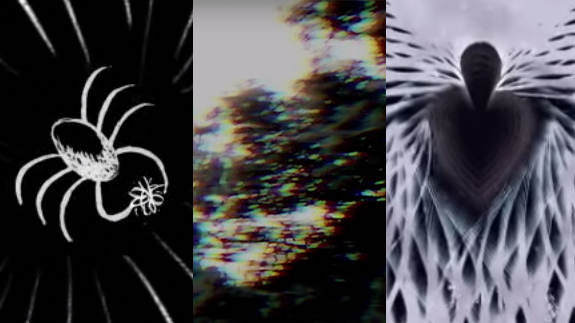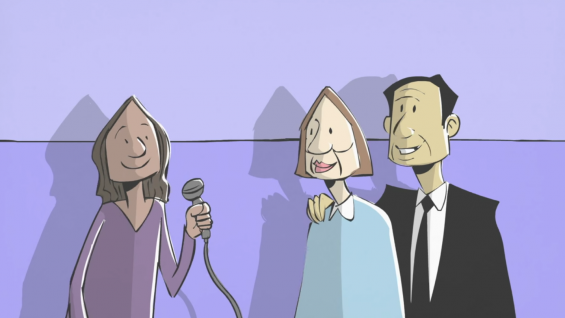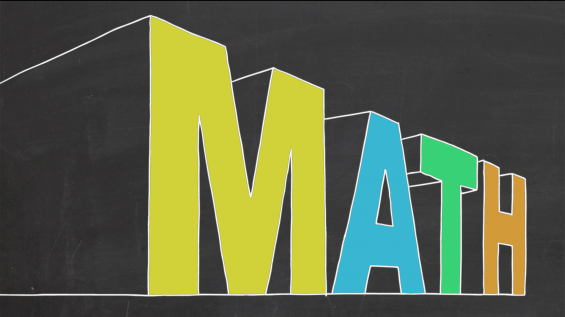
How 3 animators interpreted the same Whitman poem in different ways

One of the most amazing things about poetry is its seemingly infinite capacity for interpretation. To illustrate that fact, TED-Ed launched a great poetic experiment. We gave one Walt Whitman poem to three of our in-house animators, and asked them to interpret it using three different styles of animation. They were each given a recording of the text to work from, which was supplied by three local poets who also interpreted the text using their voices. The result? A stunning video that breathes three very different lives into Walt Whitman’s timeless poem, “A Noiseless Patient Spider.” We caught up with animators Jeremiah Dickey, Lisa LaBracio and Biljana Labovic to discuss the process and gather their impressions of the final video.
Tell me a little bit about the original goal of this poetic experiment.
Jeremiah Dickey: The idea was to illustrate how subjective people’s interpretation of poetry is by taking the same poem and doing three different animated interpretations of it — with each animator not knowing what the other animators were doing, so as not to influence the outcome.
This question is for each of you: Tell me about your interpretation. Why did you choose to animate the poem this way?
Lisa LaBracio: Well, doing animation with scratchboard was actually something I wanted to try, so that was kind of a separate decision. It wasn’t necessarily something that I thought, “Oh my god, this poem requires scratchboard animation” — I just always wanted to try doing that, and this was a short enough piece of content that I could try something that was a little bit more labor intensive.
Then, I spent a lot of time on the poem. I actually had my recording before I started animating, which I don’t think everybody did, and so I spent a lot of time just listening to it over and over and over and over again. I happened to be at the beach while I was listening to it, so the water thing really was just hitting at the time, which I think probably translates.
I think I was also interpreting [my voiceover poet] Rives’ interpretation and the way that he read it was also so — I think someone described it as “cartwheeling.” That’s a really good description of it, because his incantation made it really hard for me to not want to string everything together from it. So, when listening to it, the second half felt like a thread that’s just being flung back and forth across the screen. And I couldn’t not see that as I was hearing it.
JD: I actually started before getting the recording, and it was really a not very premeditated at all, stream-of-consciousness kind of process. And I had the poem in my head as I was reading it myself, but then when the recording was available to marry to the animation, which was already in progress, it was this really wonderful rediscovery of it. [My voiceover poet] Mahogany Browne did such a great job. The rhythm of how she delivered the poem was very different from how I had envisioned it, but the animation kind of being a free-flowing transition from one thing to the next, it married her performance of it really well.
Jeremiah, I know you normally do a ton of research to prepare for your animations. Did you do any specific research on this one?
JD: Not with this one. I mean, I looked up what a spider looked like. Because it was starting so close up to the eyes, I just wanted to make sure that what I had envisioned wasn’t a totally sci-fi, ridiculous thing. And it wasn’t — there was one that kind of looked like that. But that’s it.
Biljana, tell us about your interpretation.
Biljana Labovic: Well, my starting point was that — since English is not my first language, in the past I didn’t read a lot of poetry in English, because a lot of times I feel that I don’t understand it. So when this assignment was mentioned to me, I thought the best way for me to participate would be to just dive into it and interpret it. And I wanted to stay true to who I am, so I actually didn’t do any research about the poem and what it means, even though I was really tempted. Because I figured that I was probably interpreting it differently than you guys, right? For me, that was an interesting angle to begin with. I also wanted to be a little bit free from the structure that we normally work with, because usually we do a lot of research on the subject. We think a lot about technique. This time around, I just wanted to be free from all of these constraints that I normally have, and I thought, “Okay, every day I will record on my phone something that I think is related to this poem, somehow.”
Unlike Jeremiah, I waited to hear the recording, because I was trying to really follow the rhythm of the voice, and let that be my guide when I was editing. So I ended up with a lot of iPhone footage, which was not necessarily the same spec that we work with, it was a little lower res, so I actually had to manipulate the footage to hide that. And I spent a lot of time editing, trying to really find that rhythm that was, in a way, my personal reading of the poem.
What were your reactions seeing each other’s pieces? Were you surprised?
JD: It was really cool. It was a treat to see the same thing that I’d spent so much time thinking about through the lens of my good friends.
BL: I think I wasn’t too surprised, only because I’m familiar with Lisa’s and Jeremiah’s work, but it was really interesting — there was a point when we all realized we did a lot of central imagery, and the same symmetrical treatment. We all had that kind of central image, that made me think, “This really captures something.”
LL: After it was strung together and with the sound and everything, I watched it a lot, and as I think as Jeremiah said, we’re all — outside of being colleagues, we’re all really dear friends, so it felt special to have this kind of experience in a different way than we normally collaborate. And I actually was really moved by it. I can’t watch it without feeling a lot of emotion. That’s probably the longest amount of time I’ve ever spent on listening to or reading a poem, and it makes me want to do it a lot, because it’s such an experience to go through a poem like that. It felt like school, but in the best of ways. I wish this had been an assignment. I think it’s a brilliant assignment for students also, because it’s just such a moving experience to discover the poem every single day while you’re working on it, and while you’re drawing or while you’re cutting it together or while you’re putting everyone else’s together. But then you see everyone else’s, and you discover it again, and it’s such a cool experience to have a constant discovery within the same two stanzas.
BL: We also all come from filmmaking, independent filmmaking. So this project was the closest to our backgrounds.
JD: Right. It was free of the utilitarian mission we usually have of illustrating something and communicating it with whatever degree of accuracy is required by the material. With this, it was really liberating to be able to just kind of see what happens and experiment.
LL: It’s also daunting too — every once in a while I would come to think, “What are all these squiggles?”
Right, because the educational component is a form of constraint, but it can also be helpful in gathering focus.
LL: Right.
JD: Yeah. Constraints are very useful, but sometimes it’s nice to shake them off.



If you would like to look into this in some more detail, please give me a shout. Our students have been breaking ground in this going back to cinegraphs in 2011 to RTS & IDI awards in 2012/13, all stimulated by the poetry of William Allingham.
The competition is called ‘Poetry In Motion’
http://www.allinghamfestival.com/poetry-in-motion